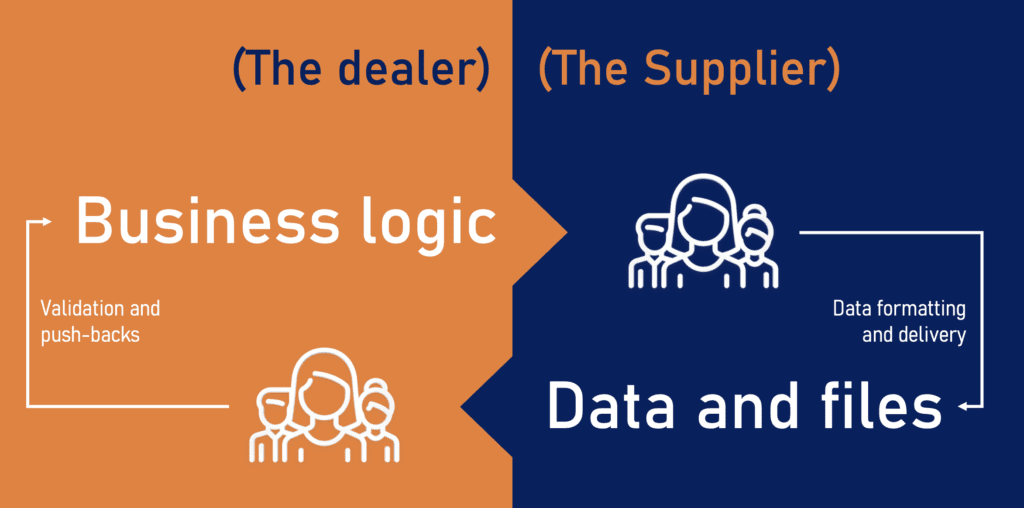

The work invested in launching new products is probably the most basic process at the vast majority of retailers and their suppliers. It is also a relatively generic process, which usually consists of the same steps: concluding a commercial agreement, obtaining data, preparing data, launching the product in the sales channels.
The work invested in launching new products is probably the most basic process at the vast majority of retailers and their suppliers. It is also a relatively generic process, which usually consists of the same steps: concluding a commercial agreement, obtaining data, preparing data, launching the product in the sales channels.
At InLoad we see many cases of highly complex processes being kicked off the moment the ink on the commercial agreement is dry. It is a quite large apparatus of various excel formats, teams, communication channels, and systems that are set in motion, before the retailer is ultimately ready to launch the new product.
Looking across the companies we meet, it is a process that takes an average of 14 working days. The reasons for this are many, but the very basic reason is that the process is managed manually with many leaps back and forth. Another basic reason is the simple fact that the supplier and the retailer are using different data management systems, which creates a natural gap between the supplier's and the retailer's data structures.
The vast majority of suppliers we meet actually have high-quality data and files that they are more than happy to make available to the retailer. They can do this quickly and easily, as long as they can stick to their own data models and formats. The retailer, on the other hand, in most cases asks for data and files in exactly the structure and in the formats that are easy for them to handle. And the differences between what is easy for a supplier and what is easy for a retailer can be quite large.


The typical result is therefore that the supplier must spend time receiving the retailer's data templates, adapting own data, filling in the templates and returning the templates to the retailer. The dealer then uses time to check and validate the data that the supplier has sent, possibly push the templates back to the supplier with a need for changes, then receive and check again and then start the process of importing data and pushing it out into the systems and channels where it is to be used. Only then can the teams working with digital marketing disciplines get started on improving data and fine-tuning.
If there are changes to the master data on the product late in the process due to low initial data quality, it can be compared to throwing a large stone into a lake – it sends waves through all teams and affects all activities.
The most obvious thing that can be said about this type of process is that it is insanely difficult to manage for both parties; large amounts of time are spent with both the dealer and the supplier. And time is typically reflected in two components: the impact that the many hands have on the profits of both supplier and retailer, and the overall time-to-market. It is a situation where both parties in the commercial relationship are put at a disadvantage.


One of the very fundamental problems with the above mentioned process is the way a retailer's business logic is reflected and built into the data collection templates that the supplier receives from the retailer. In the same way, the supplier's business logic is reflected in the data structures that are easiest for the supplier to deliver. And by the way, don't just deliver once, but keep updated in the long term. Cut to the bone, you can say that the supplier and the retailer have different purposes in terms of data, and they certainly have different data structures.
In the process review mentioned above, the retailer tries to push its internal business logic backwards in the value chain in the shape of fields in a data template to all the suppliers from whom goods are purchased and data is obtained. This requires a massive transfer of knowledge from the retailer to the supplier. The supplier can usually do nothing but try to meet the retailer's requirements as best they can, but the very basic problem is that the supplier has no place to store the
retailer's business logic; after all, the supplier probably doesn't just have one dealer customer, but many, and thus also many dealer logics they must juggle every time data is to be delivered. What happens when new people step into the process on both sides?
The ever-increasing amount of data that a supplier must deliver in very specific formats to the retailers, and the retailer must obtain from the supplier, can be compared to pushing a growing ball of snow and rocks up a mountain. At some point, the ball gets so big and heavy that it rolls the opposite way and crushes the people trying to push it up the mountain at both the supplier and the retailer.
Fortunately, there is a way to gain full control. We help our customers on both the supplier and dealer side to shorten the processes of sharing data and files, and it is possible to shorten the process so much that it only takes a few seconds to become data-ready for sales.
Contact InLoad today and get inspiration on how you can reduce time consumption from 14 days to 14 seconds.
